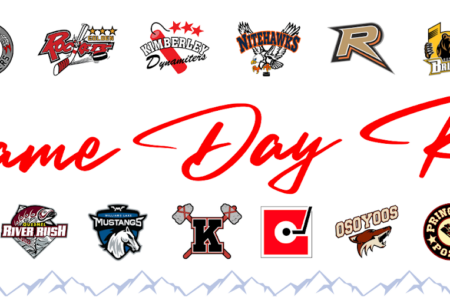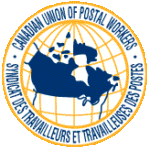Guns, booze, and lingerie: Tales from the US-Canada frontier
Rolling up to the border, fumbling for the passport, stop-go-stop-go, turn off the radio, turn off the engine, the steely eye contact, skill testing questions, drugs no, guns no, criminal record no, sausage. What? Umm, I don’t think so, I mean no… more steely eye contact. Border crossing can get the heart pumping.
No matter how law-abiding one may be, it doesn’t help to think of the Predator drones that now patrol the friendly U.S.-Canada border “from the Lake-of-the-Woods region of Minnesota to the vicinity of Spokane, Washington” according to U.S. Customs.
And for no reason at all you may get selected for a secondary examination where they might sift through your legal but cheek-flushing stash of lingerie; border service officers (BSOs) have unfettered access to everything, including the contents of electronic devices.
That’s right, your cellphone, laptop, or even a memory stick can be detained at the border or scanned and copied for a more thorough search. It’s a sign of the times that post-9/11 security trumps individual rights.
“I get nervous crossing the border!” laughed BSO Erin Steeksma, the lead officer in a posse dispatched by the Canadian Border Service Agency’s (CBSA) communications department in Vancouver to do the rounds of the Okanagan and Kootenay districts’ 16 ports of entry, tasked to answer questions and clear up misconceptions along the way.
“I think everyone gets nervous. But most people get into the flow and start to relax a bit as the questions go on,” Steeksma explained. “People who are trying to hide stuff, the more questions you ask, the more you probe, the more nervous they tend to become.”
That’s just what happened on September 15 at the Waneta crossing when a British Columbian male tried to conceal almost $20,000 in bundles of American and Canadian currency. The BSOs sensed the man was nervous and unable to provide details.
The BSOs seized the money and the traveler was required to pay a $250 penalty before the cash was returned.
“It’s not illegal to import or export currency, but you have to declare it [when there’s more than $10,000],” Steeksma pointed out.
“It helps border services monitor money,” she said. “It helps them differentiate between legitimate money and money that’s being laundered and used to fund terrorist operations, for example.”
While terrorists haven’t been nabbed around here lately, there have been plenty of Americans caught gun smugglin’.
Gordon Daugharty looked nervous at the Kingsgate crossing east of Creston on Sept. 4. Officers found a loaded handgun in his centre console, arrested him, and seized his vehicle. His fees and fines tip the scales at 36 grams of gold. After a waiting period, his gun will be destroyed.
It was the same story on Sept. 8 at Kingsgate. This time, an American tried the old shoplifting trick of partial disclosure. He declared pepperspray, but the officer looked deeper and found three prohibited, loaded handguns and a high-capacity magazine. So far this man’s on the hook for more than $4,000.
On Sept. 22 at the Osoyoos crossing, a U.S. woman was caught with two semi-automatic handguns and 10 undeclared bottles of booze. Like the others, her car was seized, the alcohol and guns are gone for good, and she’s more than $,2000 in the hole.
It’s not illegal to bring firearms into Canada so long as the guns and ammo are legal here, the number of rounds is within a calibre-dependent limit, and the traveller has Canadian permits and licenses. It’s all laid out in documents like this.
“Be aware and declare!” says a Canadian government website with information on what travellers need to declare on their way north. It’s a pretty long list and probably worth checking before your next trip.
“If you declare it, you’re okay,” Steeksma said. If a traveller turns up at the border and simply forgot until then that they had a prohibited item on board — for example, a restricted firearm — they can simply declare the fact and go back to store it safely before returning to the border.
And you need to be just as aware of U.S. laws and export limits. U.S. Customs frequently and randomly set up export checks to make sure limits aren’t exceeded.
Food is just one example.
“Canada has complex requirements,” Steeksma admits, with “restrictions and limits on the import of meat, eggs, dairy products, honey, fresh fruit, and vegetables.”
Broaden that to plants and animals in general as items as diverse as feather boas, wooden carvings, sea shells, pets, and sausage are on the list. The CBSA site has more information, and the Canadian Food Inspection Agency’s site gives the details on food.
Steeksma gave the rule of thumb: “All plant and animal products must be declared.”
If you don’t declare an item, it just may be seized. Once seized, it may not be returned, but if it is, you’re likely to pay a fine of 25 to 80 per cent of the item’s value.
Across Canada’s 132 ports of entry in August, BSOs made 110 seizures, including 26 narcotics seizures and seizures of $250,000 worth of goods. They collected $35,000 in associated civil penalties. In the same period, entry to Canada was denied to 170 people, mostly due to criminal records.
On the topic of criminals and narcotics, the border conjures images of camo-clad drug smugglers making their way through the woods. Jurisdiction ends at the border — BSOs can’t cross to the south, for example —and RCMP and local police have jurisdiction between ports of entry, so joint forces are required for busts like the bust of eight people with 119 pounds of marijuana two weeks ago in Osoyoos.
“There are known hot spots that people use to cross and smuggle,” Steeksma said. “They’d been working on the file for a long time,” she added, referring to the Integrated Border Enforcement Teams (IBET) that are formed between Canadian and American law enforcement services.
“That’s cooperation and information sharing at a higher level above the individual ports of entry,” she explained.
Of course, most of us are simply law-abiding citizens with a fully functional adrenal gland.
With that in mind, as you vacuum your car in preparation for your next trip to the States, consider medical insurance, calculate if you’ll be away 48 hours (so you can snag a bottle of duty-free scotch), double-check that your passport hasn’t expired, and consider that they might search your iPhone. Then relax, smile, and hit the road.


























